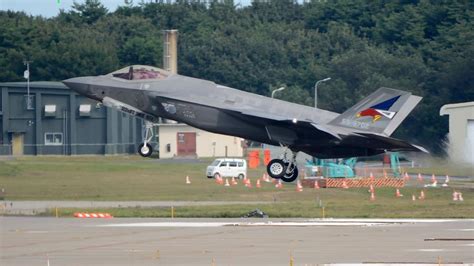
Starfighters International is considering acquiring retired McDonnell Douglas F-4 Phantom II fighter jets to convert them into unmanned launch vehicles for deploying small satellites into orbit, offering a potentially lower-cost alternative to traditional rockets. The company envisions repurposing the iconic Cold War-era aircraft to air-launch rockets, capitalizing on their speed and altitude capabilities to reduce the fuel needed for orbital insertion.
Starfighters Intl., a civilian company specializing in operating and maintaining high-performance military aircraft, aims to leverage the F-4 Phantom’s capabilities for a novel purpose: launching small payloads into space. According to the company, the F-4’s speed and operational ceiling would allow for a more efficient and cost-effective launch process compared to ground-based launches. The initiative reflects a growing trend in the space industry to find innovative and affordable solutions for deploying small satellites, driven by the increasing demand for Earth observation, communication, and scientific research.
The concept involves mounting a rocket beneath the F-4 Phantom, which would then be flown to a high altitude and speed before releasing the rocket. This air-launch method provides several advantages. First, it reduces the amount of fuel the rocket needs to reach orbit, as it already has a significant head start in terms of altitude and velocity. Second, it allows for greater flexibility in launch locations, as the aircraft can take off from a variety of airfields. Third, it can potentially lower the cost of launches, as it eliminates the need for expensive launch infrastructure.
While the concept is still in the early stages of development, Starfighters Intl. believes that it has the potential to disrupt the small satellite launch market. The company is currently evaluating the feasibility of the project, including the availability of suitable F-4 Phantoms, the cost of converting them into launch vehicles, and the regulatory requirements for operating such a system.
The F-4 Phantom II, a twin-engine, long-range supersonic jet interceptor and fighter-bomber, served as a workhorse for the U.S. military and several other nations for decades. Known for its speed, payload capacity, and ruggedness, the F-4 played a significant role in the Vietnam War and other conflicts. While many F-4s have been retired from military service, some are still in operation, primarily as target drones or for other specialized roles.
Repurposing retired military aircraft for space launch is not a new idea. Several companies have explored similar concepts using other types of aircraft, such as Boeing 747s and Lockheed L-1011s. These air-launch systems offer the potential to launch satellites into specific orbits more quickly and affordably than traditional ground-based launch systems. However, they also face technical challenges, such as integrating the rocket with the aircraft, ensuring the safety of the launch process, and obtaining the necessary regulatory approvals.
Starfighters Intl. faces significant hurdles in bringing its F-4 Phantom launch concept to fruition. Securing a sufficient number of airworthy F-4 Phantoms is a primary challenge, considering their age and diminishing availability. Converting these aircraft into functional launch platforms would require substantial engineering modifications and rigorous testing to ensure safety and reliability. Gaining regulatory approval from agencies like the Federal Aviation Administration (FAA) for operating a commercial air-launch system also presents a complex process, involving stringent safety standards and environmental considerations. Finally, securing funding for the entire project, including aircraft acquisition, conversion, testing, and operational infrastructure, represents a major financial undertaking.
Despite these challenges, Starfighters Intl. believes that the potential benefits of its F-4 Phantom launch concept outweigh the risks. The company hopes to capitalize on the growing demand for small satellite launches and offer a more affordable and flexible launch solution than traditional rockets. If successful, the project could not only revitalize the legacy of the F-4 Phantom but also contribute to the expansion of space access for a wider range of users.
The potential impact of Starfighters Intl.’s project extends beyond just cost-effective satellite launches. It could spur innovation in aerospace engineering, create new jobs in the space industry, and inspire a new generation of engineers and scientists. The project also highlights the potential for repurposing existing technology to address new challenges and opportunities, demonstrating how innovation can come from unexpected places. As the space industry continues to evolve, companies like Starfighters Intl. are playing a crucial role in pushing the boundaries of what is possible and making space more accessible to all.
Furthermore, the company’s vision aligns with the broader trend of democratization of space, wherein smaller players can participate in space activities without requiring massive government-funded programs. By offering a lower barrier to entry for satellite launches, Starfighters Intl. could enable more startups, research institutions, and even developing nations to access space for various purposes, from scientific exploration to commercial applications. This could, in turn, accelerate the pace of innovation in space-related technologies and services, leading to new discoveries and advancements that benefit society as a whole.
The success of Starfighters Intl.’s project could also have implications for the future of retired military aircraft. Instead of being scrapped or relegated to museums, these aircraft could be repurposed for a variety of civilian applications, such as scientific research, disaster relief, or even space tourism. This could create new economic opportunities and help preserve the historical legacy of these iconic machines.
However, the project also raises some important ethical considerations. The use of military technology for civilian purposes could be seen as controversial by some, especially if it involves aircraft that were originally designed for combat. It is important for Starfighters Intl. to address these concerns and ensure that its project is conducted in a responsible and ethical manner.
Moreover, the environmental impact of air-launched rockets needs to be carefully considered. Rocket launches can release pollutants into the atmosphere, which could contribute to climate change and other environmental problems. Starfighters Intl. should invest in developing cleaner rocket fuels and launch technologies to minimize the environmental footprint of its operations.
In conclusion, Starfighters Intl.’s plan to repurpose retired F-4 Phantom fighter jets for space launches is an ambitious and innovative project with the potential to disrupt the small satellite launch market. While the company faces significant technical, regulatory, and financial challenges, the potential benefits of the project are substantial. If successful, it could not only revitalize the legacy of the F-4 Phantom but also contribute to the expansion of space access for a wider range of users, spur innovation in aerospace engineering, and create new economic opportunities. However, it is important for Starfighters Intl. to address the ethical and environmental concerns associated with the project and ensure that it is conducted in a responsible and sustainable manner. The coming years will be crucial in determining whether this bold vision can become a reality and whether the F-4 Phantom can once again take to the skies, this time as a launch platform for the next generation of space technologies.
Detailed Breakdown:
The initial paragraph summarizes the core concept: Starfighters International aims to use retired F-4 Phantoms for launching small satellites, offering a cost-effective alternative to traditional rockets. The next paragraphs expand on this, highlighting the F-4’s capabilities, the air-launch method’s advantages, and the company’s vision for disrupting the small satellite launch market.
The article then delves into the challenges faced by Starfighters International, including acquiring airworthy F-4s, converting them into launch vehicles, securing regulatory approvals, and obtaining funding. Despite these hurdles, the company remains optimistic about the project’s potential benefits, such as offering affordable and flexible launch solutions.
Further details are provided on the potential impact of the project, including spurring innovation, creating jobs, and democratizing space access. The article also addresses ethical and environmental considerations, emphasizing the need for responsible and sustainable operations. Finally, the conclusion reiterates the project’s ambition and potential, while acknowledging the challenges and the importance of addressing ethical and environmental concerns.
F-4 Phantom II Background:
The F-4 Phantom II is a tandem two-seat, twin-engine, all-weather, long-range supersonic jet interceptor and fighter-bomber originally developed for the U.S. Navy by McDonnell Aircraft. It first entered service in 1960 and quickly became a mainstay of the U.S. military and several other armed forces around the world. The F-4 is capable of reaching speeds of over Mach 2 and can carry a variety of air-to-air and air-to-ground missiles, as well as bombs and rockets. It played a significant role in the Vietnam War, serving as both a fighter and a bomber. The F-4 was also used in the Yom Kippur War, the Gulf War, and other conflicts. While most F-4s have been retired from military service, some are still in operation as target drones or for other specialized roles. Its rugged design, powerful engines, and impressive payload capacity make it an attractive candidate for repurposing.
Air Launch Advantages in Detail:
Air launch offers several key advantages over traditional ground-based rocket launches:
-
Reduced Fuel Consumption: By launching from a high altitude and at a significant speed, the rocket requires less fuel to reach orbit. This translates to lower launch costs and the ability to carry heavier payloads.
-
Increased Launch Flexibility: Air launch allows for launches from a wider range of locations, as the aircraft can take off from various airfields. This provides greater flexibility in choosing the optimal launch trajectory and orbit.
-
Weather Independence: Air launch is less susceptible to weather conditions than ground-based launches. Aircraft can often fly above weather systems, allowing for launches to proceed even when ground conditions are unfavorable.
-
Mobile Launch Platform: The aircraft serves as a mobile launch platform, allowing for launches to be conducted from different locations depending on the mission requirements. This is particularly useful for launching satellites into specific orbits.
-
Lower Infrastructure Costs: Air launch eliminates the need for expensive launch infrastructure, such as launch pads and support facilities. This can significantly reduce the overall cost of launching satellites.
-
Faster Launch Preparation: Air launch can often be prepared more quickly than ground-based launches, as it does not require as much pre-launch testing and preparation. This can be advantageous for missions that require a rapid response.
Challenges and Considerations:
While air launch offers several advantages, it also presents some significant challenges and considerations:
-
Aircraft Modification: Converting an aircraft into a launch platform requires substantial engineering modifications and rigorous testing to ensure safety and reliability. This can be a complex and expensive process.
-
Rocket Integration: Integrating the rocket with the aircraft requires careful design and testing to ensure that the rocket can be safely and effectively launched.
-
Safety Concerns: Air launch involves launching a rocket from an aircraft in flight, which raises significant safety concerns. Strict safety protocols and procedures must be in place to minimize the risk of accidents.
-
Regulatory Approvals: Obtaining regulatory approvals from agencies like the FAA for operating a commercial air-launch system can be a complex and time-consuming process.
-
Environmental Impact: Rocket launches can release pollutants into the atmosphere, which could contribute to climate change and other environmental problems. Cleaner rocket fuels and launch technologies are needed to minimize the environmental footprint of air launch.
-
Payload Capacity: Air launch systems typically have a lower payload capacity than ground-based launch systems. This may limit the size and weight of satellites that can be launched using this method.
Economic Viability:
The economic viability of Starfighters Intl.’s F-4 Phantom launch concept will depend on several factors, including the cost of acquiring and converting the aircraft, the cost of developing and manufacturing the rockets, the cost of operating the launch system, and the price that the company can charge for its launch services.
If Starfighters Intl. can successfully manage these costs and offer launch services at a competitive price, it could capture a significant share of the small satellite launch market. However, the company will face competition from other air-launch providers, as well as from traditional ground-based launch providers.
The demand for small satellite launches is expected to continue to grow in the coming years, driven by the increasing demand for Earth observation, communication, and scientific research. This presents a significant opportunity for Starfighters Intl. to establish itself as a leading provider of small satellite launch services.
Regulatory Landscape:
The regulatory landscape for commercial space launches is complex and evolving. In the United States, the FAA is responsible for regulating commercial space launches and ensuring the safety of the public.
Starfighters Intl. will need to obtain a launch license from the FAA before it can begin operating its F-4 Phantom launch system. The FAA will review the company’s launch plans, safety protocols, and environmental impact assessment before issuing a license.
The regulatory process can be lengthy and expensive, and Starfighters Intl. will need to work closely with the FAA to ensure that it meets all of the requirements.
Future of Small Satellite Launches:
The small satellite launch market is undergoing rapid growth and innovation. New launch technologies and business models are emerging, making it easier and more affordable to launch small satellites into orbit.
Air launch is just one of the many innovative approaches that are being developed to address the growing demand for small satellite launches. Other approaches include dedicated small satellite launch vehicles, rideshare missions on larger rockets, and even spaceports located on barges or ships.
The future of small satellite launches is likely to be characterized by greater competition, lower costs, and increased flexibility. Companies like Starfighters Intl. are playing a crucial role in shaping this future by developing new and innovative launch solutions.
Environmental Impact Mitigation:
Recognizing the environmental concerns associated with rocket launches, Starfighters Intl. should prioritize mitigation strategies to minimize its carbon footprint. This includes exploring cleaner-burning rocket propellants such as liquid oxygen and liquid methane, investing in technologies to reduce soot and other emissions, and implementing sustainable operational practices at its launch facilities. Collaborating with environmental research institutions and actively participating in industry initiatives to develop eco-friendly launch solutions will further demonstrate the company’s commitment to environmental stewardship. A comprehensive environmental impact assessment should be conducted to identify potential risks and develop strategies to mitigate them effectively. Furthermore, Starfighters Intl. should strive to offset its carbon emissions through reforestation projects or other carbon sequestration initiatives, contributing to a more sustainable space industry.
Community Engagement and Public Perception:
Successful implementation of Starfighters Intl.’s project hinges on fostering positive relationships with local communities and managing public perception. Transparency and open communication are crucial to address potential concerns regarding noise pollution, safety risks, and environmental impacts. Engaging with local residents through town hall meetings, community forums, and educational outreach programs will help build trust and ensure that the project aligns with community values. Highlighting the economic benefits of the project, such as job creation and local business opportunities, can further strengthen community support. Moreover, promoting the scientific and educational aspects of the project can inspire a new generation of engineers and scientists, fostering a sense of pride and ownership within the community. By prioritizing community engagement and actively addressing public concerns, Starfighters Intl. can create a positive social environment for its operations.
FAQ:
-
What is Starfighters International planning to do with the retired F-4 Phantom fighter jets? Starfighters International aims to convert retired F-4 Phantom II fighter jets into unmanned launch vehicles for deploying small satellites into orbit. The company plans to mount a rocket beneath the F-4 Phantom, which would then be flown to a high altitude and speed before releasing the rocket for orbital insertion.
-
Why use F-4 Phantoms for space launches? The F-4 Phantom’s speed and operational ceiling would allow for a more efficient and cost-effective launch process compared to ground-based launches. The air-launch method reduces the amount of fuel the rocket needs to reach orbit, allows for greater flexibility in launch locations, and can potentially lower the cost of launches.
-
What are the main challenges facing Starfighters International in this project? The main challenges include securing a sufficient number of airworthy F-4 Phantoms, converting these aircraft into functional launch platforms, gaining regulatory approval from agencies like the FAA for operating a commercial air-launch system, and securing funding for the entire project.
-
What are the potential benefits of this project? The potential benefits include offering a more affordable and flexible launch solution than traditional rockets, spurring innovation in aerospace engineering, creating new jobs in the space industry, and democratizing space access for a wider range of users.
-
Are there any ethical or environmental concerns associated with this project? Yes, ethical concerns may arise from using military technology for civilian purposes. Environmental concerns include the potential release of pollutants into the atmosphere from rocket launches. Starfighters Intl. needs to address these concerns and ensure that its project is conducted in a responsible and ethical manner, exploring cleaner rocket fuels and launch technologies to minimize the environmental footprint of its operations.









